|
|
|
Choose
a county to explore.
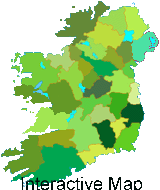
|
| |
| Ireland
possesses a profusion of ecclesiastical sites, ranging in size from tiny
stone roofed cells built by early Celtic Christian monks, to sprawling
monasteries When Patrick returned as an evangelist to Ireland in 432 he built what is generally regarded as the country's first church at Saul near Downpatrick Co Down. Although St Declan a Welsh monk is reputed to have built a church at Ardmore, County Waterford some thirty years previously. It seems likely Patrick converted a barn given to him by the local chieftain Diohu the Irish word for barn was 'sabhall' from which is derived Saul. Patrick began his crusade traveling the length of the land, talking to and befriending chieftains and kings, essential if his mission was to succeed. Many of the early church were in the hands of sons, brothers, nephews or grandsons,of local chieftains, this certainly was the case in County Down. Eventually Patrick adopted Armagh as the ecclesiastical center of Ireland. The success of the early church in Ireland was
due in no small way, to their ability to integrate native festivals and
traditions into their doctrine, while establishing their churches at or
near sites which the Celtic people held sacred such as oak groves, or
sacred wells. The church in Ireland developed broadly speaking along its
own lines, for almost two hundred years, In the early days of Christian Ireland Monasteries were set up in wild bleak locations, monks living a life of extreme austerity. This seemed eventually to fall from favour, new houses being established in the more fertile areas, often at the behest of a local chief or King. This practice proliferated to a great extent after the Norman conquest. In time, a decline in the religious fervor of the monks set in. Some monasteries passed into the control of lay people, some were ruled by King - Abbots who performed both function. Many kinds of abuses crept in resulting in the 700's, a reform movement began, led by men called Celi De (servants of God), their aims were a return to the former strictness and austerity of monastic life. It would appear there was considerable rivalry between the various religious houses, to control the souls and minds of the local inhabitants. In 764 Durrow and its neighboring Monasteries Clonmacnoise were in conflict, resulting in a battle in which Durrow suffered two hundred dead, not the atypical image of monastic calm and brotherly love. In many cases the Abbots or founders of the monasteries were clan chiefs, or of royal lineage, many had at their disposal large armies, which it appears were frequently used against rival houses. The greatest of the Irish raiders was Feidlimid mac Crimthainn, king of Munster, who is reputed to have burned the monasteries of Kildare, Clonfert, Durrow, and Clonmacnoise. Feidlimid was himself in holy orders, probably of Episcopal rank As such his sympathies lay with the Celi De, and justified his raids as a crusade to stamp out corruption in the church. Although his victims were probably chosen because of their affiliation with the Ui Neill kings of the north. St Columba, or Colmcille who founded Durrow in 553, was of the northern O'Neill dynasty and inherited royal blood from both parents, and in all possibly a political agenda also. Up to the late 700's monastic life flourished, Ireland became the cultural, educational and craft center of Europe, producing, chalices, crosses, jewelry and many other many articles in gold and silver, the famous Ardagh Chalice was made about 725. Scribes worked in their scriptoriums producing the beautifully illuminated manuscripts, such as the Book of Kells and The Book of Durrow, written about 650 surviving over 1,300 years, it can be seen at Trinity College in Dublin. Ireland was also an important center for education, it is reported that a monastery founded by St Finnian at Clonard Co Meath, had shortly after its foundation 3000 students many of whom lived in wattle and mud huts until more substantial buildings were constructed. Many of Europe's monarchs were educated in Monasteries in Ireland, Dagobert II of the Western Franks and Aldfrid of Northumbria to name but two. From Ireland missionaries went to the mainland of Europe. Columbanus went to France and Italy; Gall, to Switzerland; Kilian, to Germany; and Livinius, to the Netherlands. They founded monasteries in many of the places that they visited. The monasteries of Bobbio, Iona, Lindisfarne, and Luxeuil were among the most famous of them. In the year 795 the first Viking raid on Ireland
took place at Lambey Island Co Dublin, this signaled the beginning of
an era which was to last about two hundred years. From that time forth they returned each year in increasing numbers, they over wintered in Ireland for the first time at Dublin in 841 - 842, in effect this probably could be considered as the founding of Dublin. The monks defended themselves as best they could, their round towers used probably to store their valuables. The Anglo Norman invasion of Ireland is considered by some to have been not merely a territorial conquest but an ideological one too, sanctioned as it appears to have been by Pope Adrian IV, when in 1155 he issued the 'Bull Laudabiliter', granting Henry II of England permission to go to Ireland and reform the Celtic Church. (It is claimed by some this document is a forgery). Perhaps Henry did not feel sufficiently secure at home, to embark on an adventure in Ireland, engaged as he was in conflict with his brother Geoffrey who was in open rebellion against him. Henry's situation was much more secure when in
1166 Dermot MacMurrough the deposed
king of Leinster, sought Henry's help to regain his kingship. MacMurrough
was referred to some of Henry's nobles the chief of which was Richard
FitzGilbert de Clare (Strongbow), MacMurrough promised the hand of his
daughter Aoife to de Clare. Some time passed while plans were laid, ships
and armies were readied, the actual invasion did not begin until 1169.
From the Anglo Norman point of view the invasion was a success in that,
eventually they gained control of a considerable portion of the land on
the east coast of Ireland. They also over a period instigated the foundation
of monastic houses more favorable disposed to Rome's perception of how
affairs in Ireland should proceed.
|
||
|
|
| The
Normans set about consolidating their position, and winning the peoples
minds, they built castles and monasteries, peopling the latter with Abbots
The next major event to befall the church in Ireland, and probably the most momentous, was once again the result of matters outside its own shores. Henry VIII of England having tired of, and failed to produce a male heir from his wife Catherine of Aragon. Decided to divorce her. To achieve this he dispensed with the church of Rome, declared himself head of the church of England. And no doubt delighted in the dissolution of the monastic houses, whereby all church property and land came under the jurisdiction and ownership of the state The dissolution of the monasteries swept aside a religious system that had endured for over a thousand years, many of the properties were confiscated and given to servants of, or persons who were sympathetic to the Tudor cause. A rebellion led by Sir Phelim O'Neill broke out in Ireland in 1641, in England the puritan Oliver Cromwell seized power from Charles I of England, after his victory in England and the beheading of the king in 1649. Cromwell came to Ireland where he and his generals ruthlessly suppressed the rebellion, exiling the Irish chiefs, who largely supported Charles, to the west of the river Shannon, Some 11,000,000 acres of their lands were seized and distributed between his followers. In France The Treaty of Nantes was revoked in 1685, this led to thousand of Huguenots (French Protestants) coming to Ireland, bringing with them not only their religion, but fortuitously for Ireland the embryo of the once great linen industry, which had its centre largely in Ulster where most of them settled. The Huguenot religion always a small minority to the best of my knowledge has not survived. In Ireland after Henry VII's reformation the religion of the state was the Church of Ireland, other religions were discriminated against. In 1798 the United Rebellion broke out, their aims were to unite Irish Protestants and Roman Catholics in an effort to make Ireland independent of Britain and establish a truly national Irish parliament. It was led by Theobald Wolfe Tone, William Rowan Hamilton, and Napper Tandy, all were Protestants, Tone a lawyer. The rebellion was unsuccessful, and many people both Protestant and Catholic seeing no hope of religious or economic freedom chose to emigrate. In Ireland farmers who were mostly Catholic and Presbyterian, and also land owners were required to pay tithes to the church, this was resented by a large section of the population across the religious divide, leading eventually to the Tithe Wars in 1830. The Great Famine which began in 1845 devastated the country, one minority religious group that excelled themselves during this period was the Quakers, who did much to alleviate the hunger and suffering. The census of 1861 showed that Ireland had a population of 5,798,967 of which 690,000 were Anglican (Church of Ireland) this was about 9% Meaning that 91% of the population supported a church to which they did not belong. The English Prime Minister Gladstone considered this an unjust arrangement and in 1869 the act was passed, which disestablished the Church of Ireland. |
||
|
|
|
|


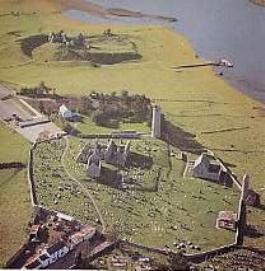
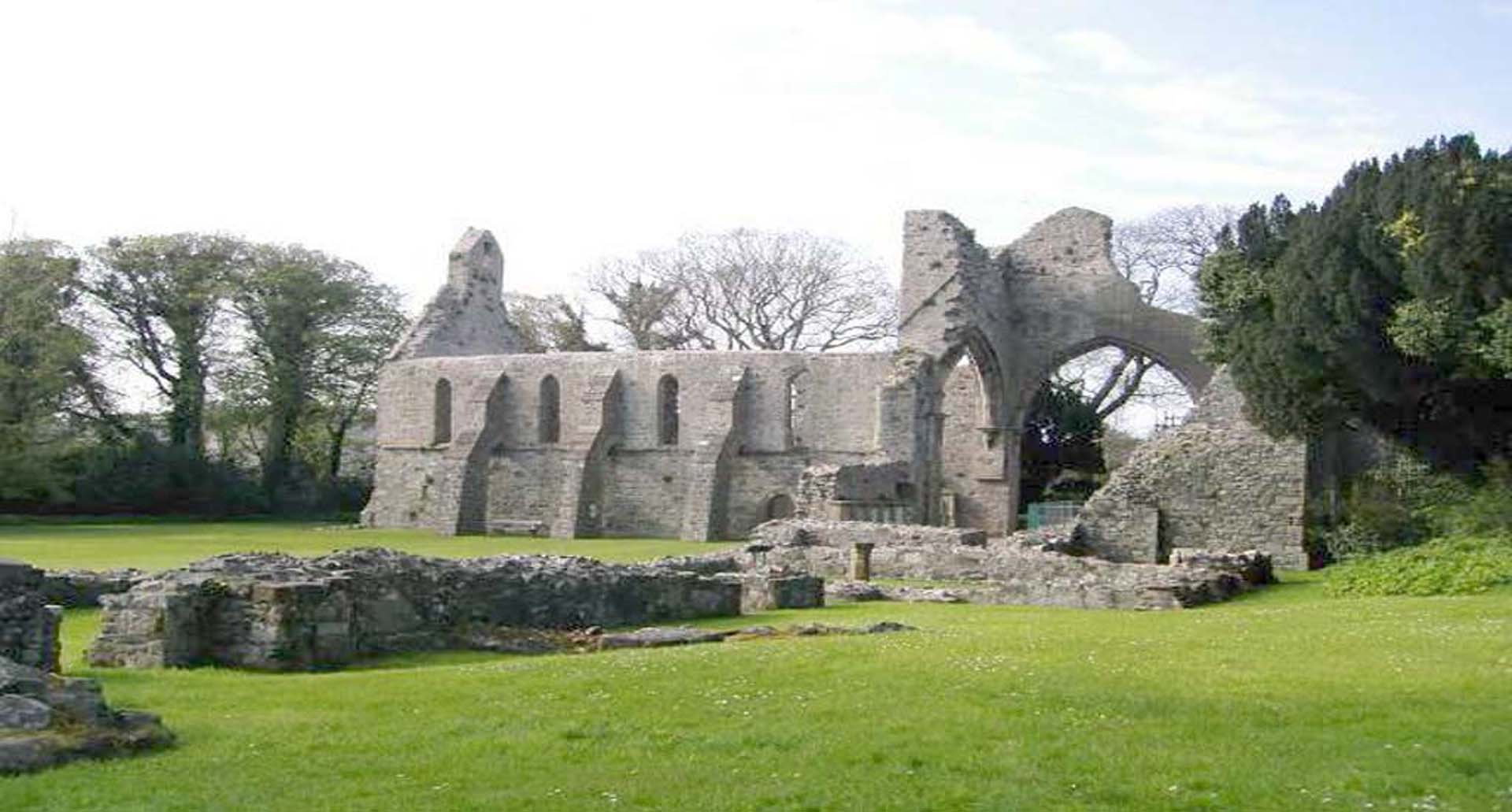
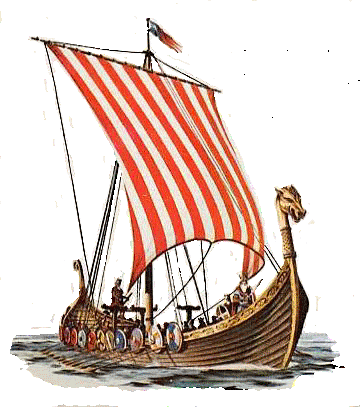 These
fierce warlike men of northern Europe found the monasteries contained
rich pickings, and were easy targets.
These
fierce warlike men of northern Europe found the monasteries contained
rich pickings, and were easy targets. 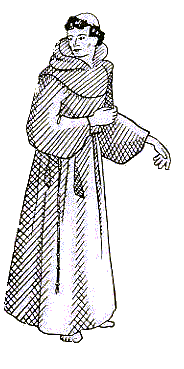 from
mother houses in England one such was
from
mother houses in England one such was